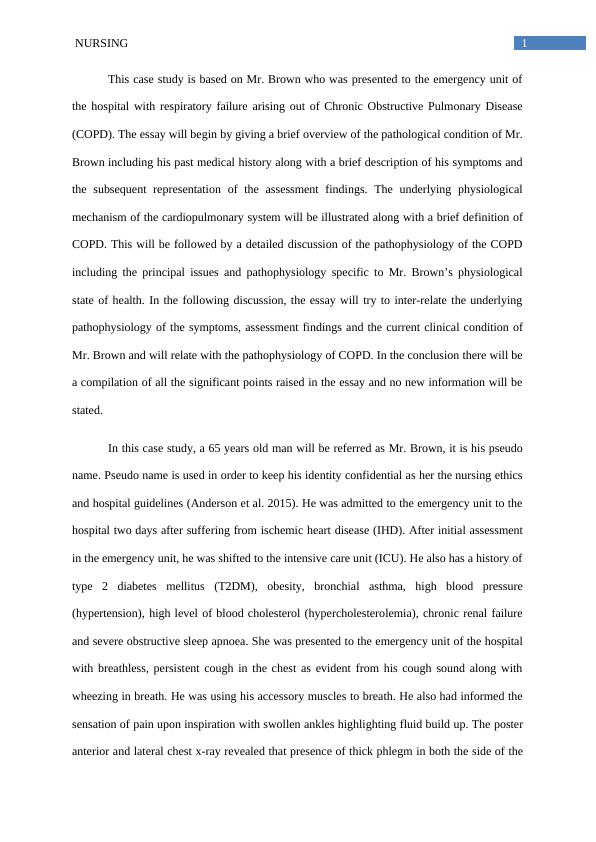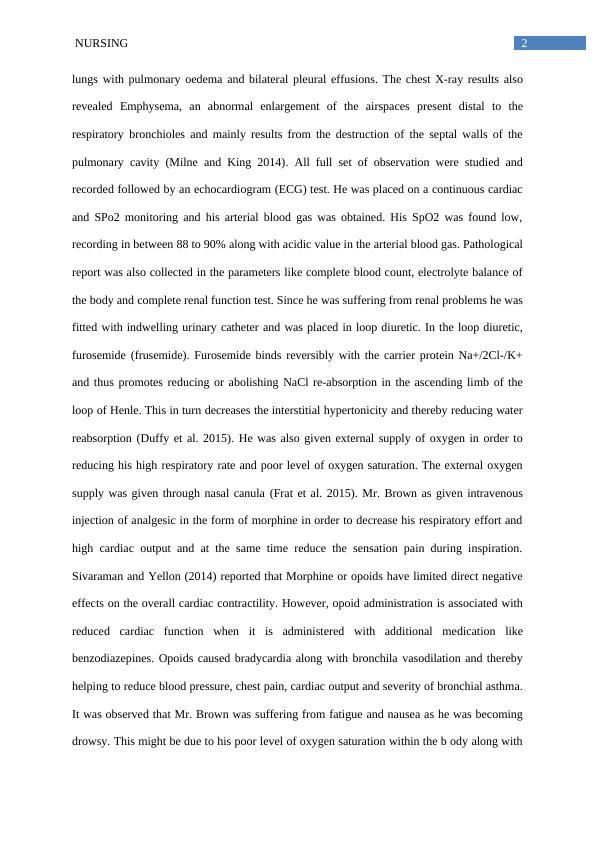Pathophysiology of COPD and its Relationship with Clinical Condition: A Case Study
10 Pages3002 Words63 Views
Added on 2022-11-29
About This Document
This case study explores the pathophysiology of Chronic Obstructive Pulmonary Disease (COPD) and its relationship with the clinical condition of a patient. It discusses the symptoms, assessment findings, and the underlying physiological mechanism of COPD. The study also examines the comorbidity of COPD with other health conditions such as asthma, diabetes, and ischemic heart disease. The findings highlight the importance of understanding the pathophysiology of COPD for effective management and early interventions.
Pathophysiology of COPD and its Relationship with Clinical Condition: A Case Study
Added on 2022-11-29
ShareRelated Documents
End of preview
Want to access all the pages? Upload your documents or become a member.
Clinical Reasoning Cycle for Patient Education of Healthy Aging
|7
|1565
|99
Case Study of Nursing Assignment
|25
|5070
|63
Congestive Heart Failure Case Study: Assessment, Diagnosis, and Management
|13
|3896
|313
Managing Chronic Obstructive Pulmonary Disease (COPD): A Case Study
|11
|3361
|107
Oxygen therapy in the pulmonary artery to lower the hypoxic condition in the pulmonary artery
|1
|646
|260
Nursing Case Study on Sepsis: Pathophysiology, Assessment, and Management
|14
|3573
|231



